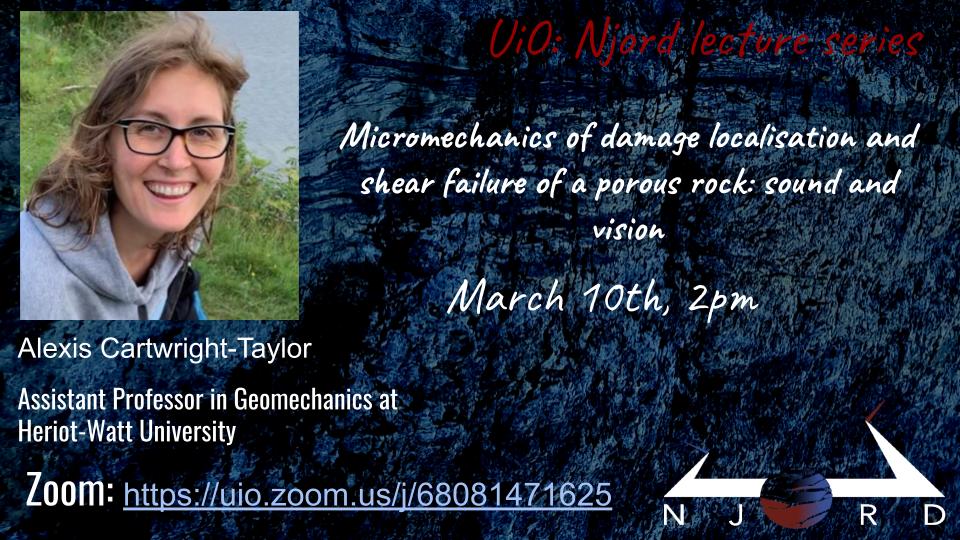Title: Micromechanics of damage localisation and shear failure of a porous rock: sound and vision
Abstract: Catastrophic failure in brittle, porous materials initiates when structural damage, in the form of smaller-scale fractures, localises along an emergent failure plane or 'fault' in a transition from stable crack growth to dynamic rupture. Due to the extremely rapid nature of this critical transition, the precise micro-mechanisms involved are poorly understood and difficult to capture. However, these mechanisms are crucial drivers for devastating phenomena such as earthquakes, including induced seismicity, landslides and volcanic eruptions, as well as large-scale infrastructure collapse. Here we observe these micro-mechanisms directly by controlling the rate of micro-fracturing events to slow down the transition in a unique triaxial deformation experiment that combines acoustic monitoring with contemporaneous in-situ x-ray imaging of the microstructure. The results provide the first integrated picture of how damage and associated micro-seismic events emerge and evolve together during localisation and failure and allow us to ground truth some previous inferences from mechanical and seismic monitoring alone. They also highlight where such inferences miss important kinematically-governed grain-scale mechanisms prior to and during shear failure. The evolving damage imaged in the 3D x-ray volumes and local strain fields undergoes a breakdown sequence involving several stages: (i) self-organised exploration of candidate shear zones close to peak stress, (ii) spontaneous tensile failure of individual grains due to point loading and pore-emanating fractures within an emergent and localised shear zone, validating many inferences from acoustic emissions monitoring, (iii) formation of a proto-cataclasite due to grain rotation and fragmentation, highlighting both the control of grain size on failure and the relative importance of aseismic mechanisms such as crack rotation in accommodating bulk shear deformation. Dilation and shear strain remain strongly correlated both spatially and temporally throughout sample weakening, confirming the existence of a cohesive zone, but with crack damage distributed throughout the shear zone rather than concentrated solely in a breakdown zone at the propagating front of a pre-existing discontinuity. Contrary to common assumption, we find seismic amplitude is not correlated with local imaged strain; large local strain often occurs with small acoustic emissions, and vice versa. The seismic strain partition coefficient is very low overall and locally highly variable. Local strain is therefore predominantly aseismic, explained in part by grain/crack rotation along the emergent shear zone. The shear fracture energy calculated from local dilation and shear strain on the fault is half of that inferred from the bulk deformation, with a smaller critical slip distance, indicating that less energy is required for local breakdown in the shear zone compared with models of uniform slip. This improvement in process-based understanding holds out the prospect of reducing systematic errors in forecasting system-sized catastrophic failure in a variety of applications.
To get news, invitations to seminars and more from Njord, please go here to subscribe to our newsletter.
